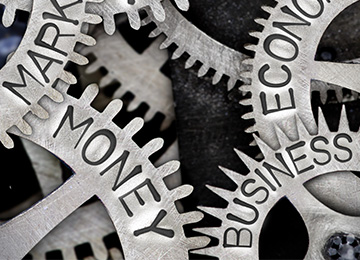The pandemic introduced hardships in many aspects of life including inflation which has continued to bite well into 2022. The raging debate on almost every platform today is whether or not we are in a recession or headed into one.
According to the NY Times, there’s a blame game on what is causing the high inflation with some experts pointing to aspects such as factory shutdowns in Asia and overtaxed shipping routes that are stifling supply chains, fanning shortages, and driving the prices of commodities into orbit.
A section of experts blames the government for injecting stimulus money into the economy, triggering overspending, and making everything worse. Further, mortgage rates that are at a 20-year high don’t make things any easier on a population that is struggling to pay for essentials.
A survey by CNBC found that 70% of Americans believe all roads seem to be leading to an economic downturn, with 88% saying the high inflation is a big indicator that a recession is underway. A newer CNBC report says there’s a 98% chance of going into recession.
A Look Back at Recessions in History
Financial experts declare a recession when a country’s economy sees negative gross domestic product (GDP) along with increasing unemployment, dipping retail sales, and shrinking income and manufacturing for a prolonged period.
In spite of all the statistics and arguments, it would be errant to assume there is such a thing as a normal recession, and that should we be headed into one, it would be a carbon copy of the recessions in history.
Take a look at past recessions such as the early 80s recession. This recession lasted between July 1981 and November 1982 and was sparked by the introduction of strict monetary policies to curb rising inflation.
Unemployment was widespread, with manufacturing, construction, and the auto industries taking the lead for the worst-hit sectors, accounting for three-quarters of job losses.
Thought Co says President Reagan responded with supply-side economics—where tax rates are cut so people can save more. As investors got more to invest, low-income earners benefitted as the investments opened more job opportunities.
He also cut back on social programs and caps that affected consumers, but he spent money on the Vietnam War, triggering a federal deficit and inflation was at 11%. However, Fed Chair, Volcker raised raise fed funds rate to 19%, which saw inflation drop by 5% by October 1982.
While the job market during this recession was struggling significantly, the current US economy has a strong job market and wages are rising. This shows not all recessions are alike.
Dotcom Bubble to 9/11 in the Early 2000s
The dot-com bubble lasted between 1995 and 2000 and was a period highlighted by massive investments in internet-based companies with investors hoping to make a kill out of the investment.
However, these investments didn’t have data to back them up and investors ignored important indicators such as the ratio of a business share price in comparison to its per-share earnings.
Companies also made the mistake of gaining market share quickly, overspending on marketing, and going out of their way to woo customers even when it meant selling products at unreasonable prices and discounts.
Also, the equity market value skyrocketed with the tech-dominated Nasdaq index growing from under 1,000 to more than 5,000 from 1995 to 2000. Things took a different turn however in 2000 and the market crashed.
Nasdaq plummeted from 5,048.62 in March 2000, to 1,139.90 in Oct. 2002. By this time, most dot com companies had also collapsed. These events triggered job losses to the tune of 85,000 according to the US Bureau of Labor Statistics. However, wages increased by about 36%.
This economic downturn was fueled by reckless investment more than anything, which is strikingly different from the post-pandemic downturn.
Housing Bubble/Collapse in the Late 2000s
After the dot-com bubble, investors set their sights on the real estate market in the early 2000s. The federal reserve was also slashing interest rates and kept them low to curb the recession that was triggered by the dot com bubble burst. The 9/11 attack on the World Trade Center introduced new economic uncertainties that exacerbated issues.
Moreover, the low-interest rates and policies that made it easier for Americans to own homes encouraged borrowing. The demand pushed housing prices up and encouraged more people to try their luck in the real estate business.
Further, lenders became too lenient and at least 20% of mortgages in 2005 and 2006 were awarded to people who wouldn’t normally qualify for the mortgage, making the mortgages unsustainable.
In the same year, the stock market started to come alive and interest rates went up. What followed was investors pulling back from buying houses, demand went down, and housing prices began to fall.
The market crashed in 2008, triggering a financial crisis that lasted until 2009. Evictions and foreclosures followed, investors became more cautious, and people lost jobs.
The government eventually responded with an act that made it possible for more bank bailouts and mergers and boosted the economy. Again, the factors that led to the 2008 housing bubble were peculiar to the period.
Once again, the bundle of factors that burst the housing bubble were unique and lasted for that period.
This one (not sure what will start it, so the name is TBD)
The first domino for the next recession could be one or all of the following: inflation, unfunded pension liabilities, corporate debt, “everything bubble”, government overspending, fixed income market collapse or energy to name a few. Cashflow and cash flowing assets will be important to survive when the slowdown happens. This could be longer than we’ve experienced and sharper than we remember 2008 being.
Finally
The bottom line in each of these bubbles and economic downturns was the factors fueling the economic harsh times were unprecedented in each scenario. The case is similar in even earlier recessions, making it impossible to have a recession that is the same as any other.
And while news reports make everything feel like a bubble today, it’s vital to take a measured view of the current outlook before panicking and waiting for a recession that may not mature.
Better yet, involve a professional to help you manage your wealth so you can better manage hard economic times.
At Creative Capital Wealth Management Group, we help our clients to manage their wealth, we offer a complimentary second opinion service, we do not require assets to be managed by us, and we have access to many alternative investment options that you won’t see at other firms.
Creative Capital Wealth Management Group is a financial advisory firm headquartered in Chester Springs, Pennsylvania and licensed in more than 25 states. To learn more, visit ccwmg.com.




